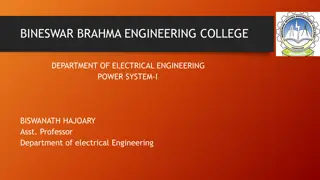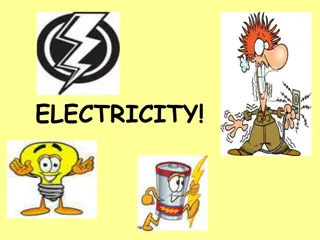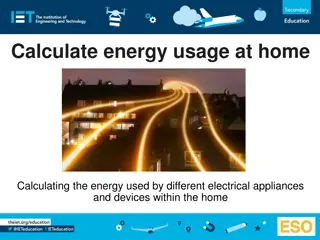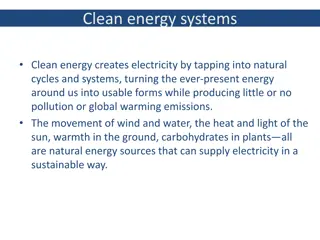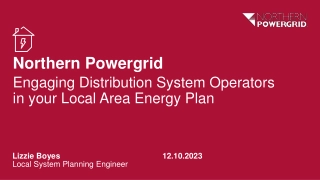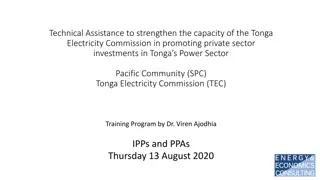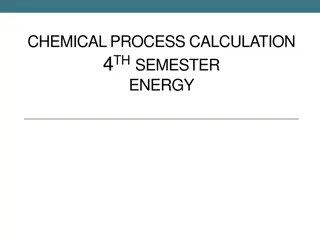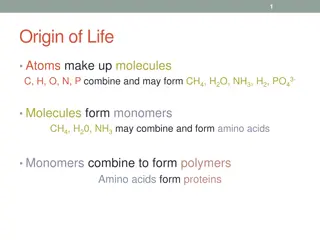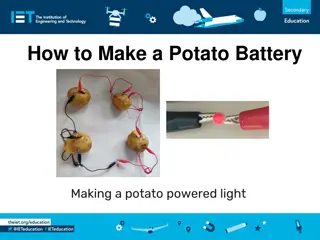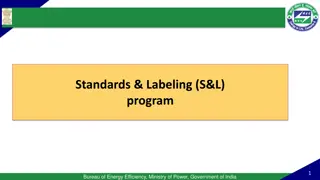Potato Power: Turning Chemical Energy into Electricity
Explore the fascinating world of potato power with Vanderbilt Student Volunteers for Science in a training presentation. Discover how chemical energy is converted to electrical energy through potato batteries, demonstrating the flow of electrons. Learn about assembling a battery and measuring voltage using a meter, all while showcasing various sources of electricity and alternative fruit power options.
Download Presentation

Please find below an Image/Link to download the presentation.
The content on the website is provided AS IS for your information and personal use only. It may not be sold, licensed, or shared on other websites without obtaining consent from the author. Download presentation by click this link. If you encounter any issues during the download, it is possible that the publisher has removed the file from their server.
E N D
Presentation Transcript
Potato Power Vanderbilt Student Volunteers for Science Training Presentation Spring 2019
I. Introduction Sources of Electricity: Ask students where electrical energy comes from. Power plants that burn fossil fuels Nuclear power plants Hydroelectric power plants Solar Wind Batteries
II. Chemical Energy to Electrical Energy: Potato Battery Demonstration Show potato battery clock to students What is causing the clock to run? No traditional battery is present Clock parts: 2 zinc electrodes, 2 copper electrodes: Conductors that can carry a current Wires carry electric current Potato: acid reacts with zinc electrode to produce electrons Electrons flow from zinc to copper. This flow produces electricity.
II. Demonstration Using One Potato Put the 2 electrodes connected to the clock into 1 potato to show that the clock does not work as well. Tell students that other fruits such as apples, oranges, lemons, and limes could be used to power the clock. What kind of energy was the chemical energy in the clock converted to? Electrical energy
III. Making a Battery: Using the Meter This meter can measure both voltage and current. Use the left setting, labeled 5V. The voltage measurement (V) tells how much pressure is pushing the electrons to move through the circuit. The current measurement (A or mA) tells how much electricity is flowing through the wires each second.
III. Assembling the Battery Fill each compartment of the green container with distilled water about half full. Help students identify the copper (orange colored) and zinc (silver colored) electrodes. Point out the arrangement of the electrodes the metals alternate. Orient the green container so that the zinc electrode is on the left. Place the M6 meter below the green container. Connect the cables, meters, and the green container. Connect the green jumper cable from the right hand side (+) terminal of the meter to the right side of the container and the yellow jumper cable from the left hand terminal of the meter to the zinc electrode. Distilled water does not contain ions and does not conduct electrical currents, so little or no voltage should be measured.
III. Assembling the Battery cont. Add two scoops of sodium bisulfate to each compartment. Stir with a coffee stirrer. Measure and record the voltage. (~3V) Now change the green jumper cable from the (+) terminal of the M6 meter to the copper electrode at the end of the 1stcompartment and measure the voltage (0.75V). Repeat for the 2ndand 3rdcompartments. Record the voltage for all arrangements (1.5V and 2.3V) Ask students what arrangement gave the highest voltage. Each compartment is a cell that produces 0.75V. The 4 compartments are connected in series so the voltages add together.
What could this battery power? Is this battery strong enough to power a digital clock like the potatoes did? Remove the jumper wire snaps from the meter and set the meter aside. Leave the wires attached to the battery tank. Place the LED in front of the battery tank so that the arrow is pointing from left to right. Connect the green jumper cable to the positive end of the LED and the yellow jumper cable to the negative end. How many compartments are needed to make the LED glow? How many compartments are needed to make the clock work?
Household Batteries Dry Cell batteries: Most common household batteries Zinc and carbon electrodes. The electrolyte is ammonium chloride or zinc chloride. Electrolytes conduct electric current Alkaline battery: manganese dioxide and zinc powder as the electrodes and potassium hydroxide as the electrolyte.
IV. Review Ask students what kind of battery has been produced Chemical Make sure students record voltages measured on their observation sheets.




